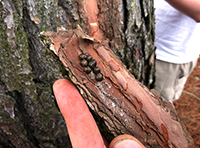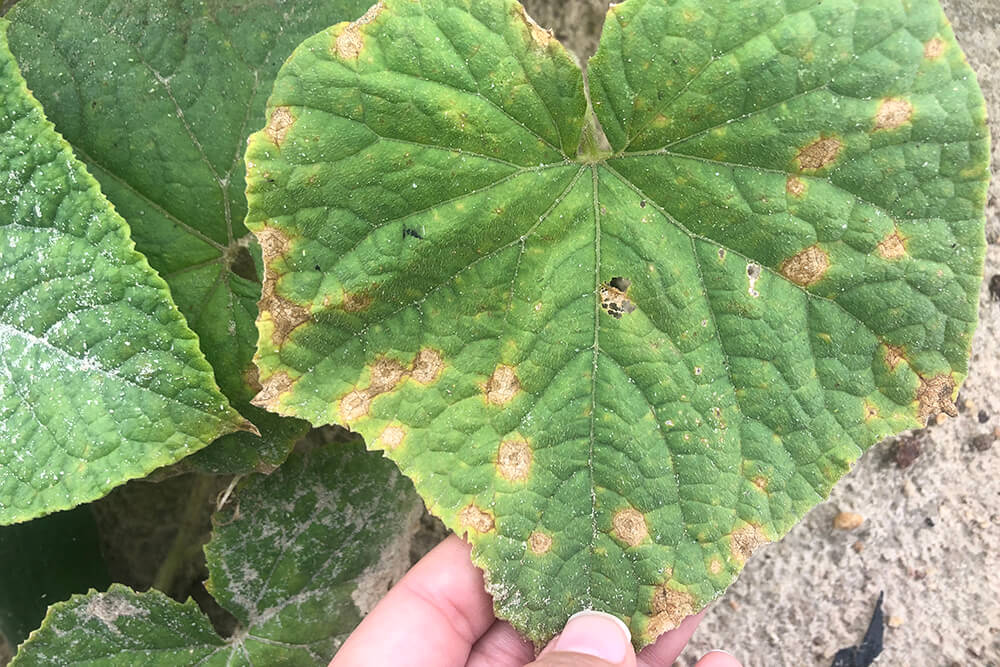Once a devastating presence in Georgia’s soybean fields and a major nuisance to homeowners, the kudzu bug population has diminished over the past three years.
“Having kudzu bugs in your field isn’t the end of the world. It becomes problematic when you have too many of them,” said Ian Knight, a University of Georgia College of Agricultural and Environmental Sciences graduate student.
The focus of Knight’s master’s degree thesis is the rapid decline of kudzu bug populations in Georgia. This unexpected decline forced Knight to change his proposed research project from measuring the rising population of kudzu bugs in Georgia to determining the reason for the population plummet.
Researchers developed a formula for counting the kudzu bugs by the number of insects that filled a certain area, he said. One cupful represented about 2,300 bugs, and two cups came to about 4,600 bugs.
“When they were at their (population) peak, you couldn’t count that many bugs,” Knight said. “That’s how I thought I would be measuring kudzu bugs, (but) nope, not even close.”
Knight studied the pest and found that populations have dropped significantly for two reasons: a parasitoid wasp and a fungus.
The parasitoid wasp Paratelenomus saccharalis can deposit a single egg into a kudzu bug egg. The wasp egg hatches and feeds on the developing egg, killing the kudzu bug within.
The wasp is not native to the U.S. It was a candidate for release to assist with the management of the kudzu bug, but it appeared on its own in recent years. UGA Cooperative Extension entomologist Phillip Roberts believes it may have arrived with the original infestation of kudzu bugs in 2009. He said it might have taken longer for the wasps to catch up with the bug population.
“We have observed greater than 50 percent kudzu bug mortality in some soy and kudzu fields due to parasitism by this wasp,” Roberts said.
Roberts and Knight also attribute the Beauveria bassiana fungus to the kudzu bug decline. The fungus attacks and kills both immature and adult kudzu bugs in soybean and kudzu fields, and UGA researchers observed kudzu bug populations killed by the fungus.
At their population peak, kudzu bugs were a major pest for soybean farmers in the Southeast. Roberts and fellow UGA entomologist Michael Toews observed an average soybean yield loss of 19 percent in untreated fields during UGA field research trials from 2010 to 2013. The damage rose as high as 60 percent soybean yield loss in some fields.
“Kudzu bug populations were outrageous during these years and caused great concern as we did not have definitive answers,” Roberts said. “Our team at UGA did a great job of finding answers that are still relevant today in Georgia and other areas of the U.S. that continue to deal with kudzu bugs.”
High populations of the pests can infect and irreparably damage soybean plants, stunting the plants’ growth, reducing seed weight and causing a decline in the number of seeds per pod.
Kudzu bugs are currently not a major issue, but that doesn’t mean their populations won’t spike in the future, Roberts said. For that reason, he implores farmers to be aware and consistently scout to curb any chance of a problem in the future.
“It was incredible how only a few kudzu bugs could turn into an outbreak several years ago,” Roberts said. “If we’re not careful, it could happen again.”




.png)


